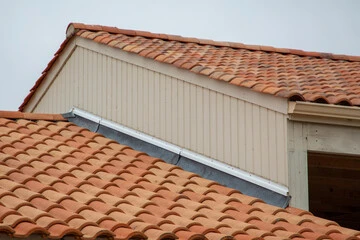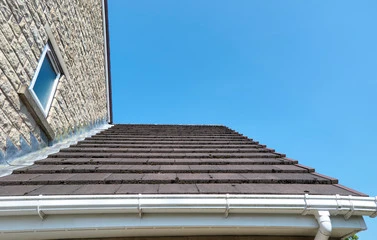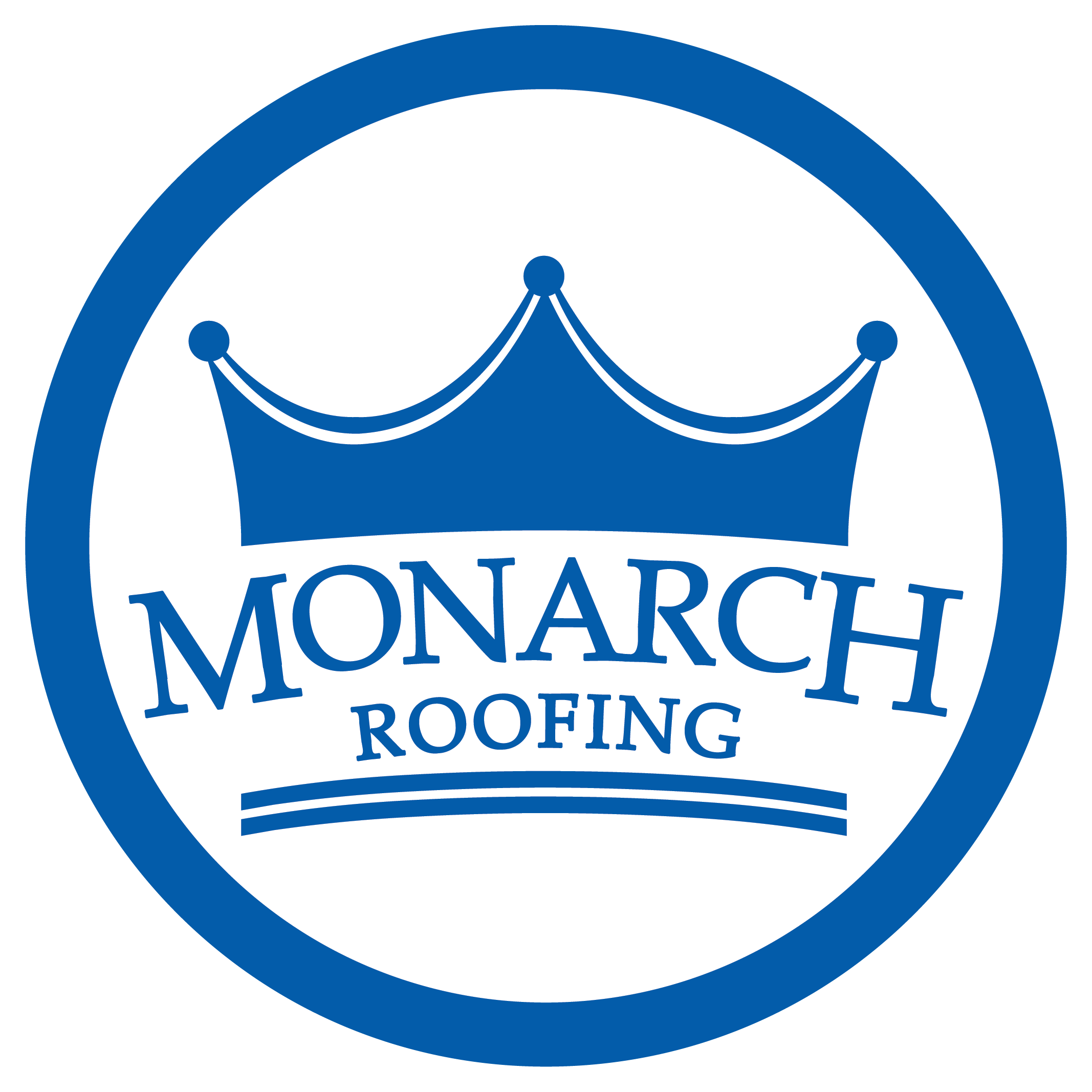When it comes to ensuring the longevity and durability of a roof, one crucial component often overlooked is roof flashing. Roof flashing plays a vital role in protecting your home from water damage by directing the flow of water away from critical areas. Without proper flashing, water can seep into the roofing materials, leading to leaks, mold growth, and structural damage. This guide will cover:
- Understanding roof flashing
- The 7 types of roof flashing
- Choosing the right material for roof flashing
🤔 Understanding Roof Flashing
Roof flashing is a thin material, typically made from metal or rubber, installed at key areas of the roof to prevent water penetration. These areas include valleys, joints, vents, chimneys, and skylights. Flashing creates a watertight barrier that directs water away from vulnerable points, effectively safeguarding the roof and the structure beneath it.
The Importance of Proper Roof Flashing
- Preventing Water Damage: Flashing is the first line of defense against water infiltration. Without it, water can easily find its way into the roofing system and the underlying structure, causing extensive damage over time.
- Enhancing Roof Longevity: Properly installed flashing helps extend the lifespan of the roof by preventing moisture-related issues such as rot, mold, and deterioration of roofing materials.
- Maintaining Energy Efficiency: Water damage can compromise the insulation and ventilation of a home, leading to higher energy bills. Flashing helps maintain the integrity of these systems by keeping water out.
- Cost Savings: Investing in quality flashing can save homeowners significant repair costs in the long run by preventing costly water damage and roof repairs.
💡 7 Types of Roof Flashing

There are several types of roof flashing, each designed for specific applications and roofing structures. Understanding the different types and their uses can help homeowners and contractors choose the right flashing for a particular roofing project.
1. Step Flashing
- Application: Step flashing is commonly used where the roof meets a vertical surface, such as walls or chimneys. It is particularly effective in areas where the roof intersects with brick or siding.
- Description: Step flashing consists of a series of rectangular metal pieces bent at a 90-degree angle. These pieces are installed in a “stepping” pattern, with each piece overlapping the one below it. This design ensures that water is directed away from the wall and onto the roof, preventing leaks.
- Materials: Step flashing is typically made from galvanized steel, aluminum, or copper. The choice of material depends on the roofing material and the desired aesthetic.
- Installation: Proper installation of step flashing involves embedding each piece into the mortar joint of the wall or securing it to the siding. The pieces should overlap by at least 2 inches to ensure a watertight seal.
2. Valley Flashing
- Application: Valley flashing is used in the valleys where two roof planes intersect. These areas are particularly prone to water accumulation, making effective flashing essential.
- Description: Valley flashing is a continuous strip of metal that runs along the valley, directing water away from the intersection and into the gutter system. It can be open or closed, depending on the roofing style.
- Materials: Common materials for valley flashing include galvanized steel, aluminum, and copper. Each material offers different levels of durability and corrosion resistance.
- Installation: Valley flashing should be installed under the roofing material, with an overlap of at least 6 inches on each side. Proper sealing and fastening are crucial to prevent water from seeping underneath the flashing.
3. Chimney Flashing
- Application: Chimney flashing is specifically designed to protect the area where the chimney meets the roof. This is a critical area prone to leaks if not properly sealed.
- Description: Chimney flashing typically consists of four main components: step flashing, counter flashing, apron flashing, and cricket flashing. Each component plays a role in directing water away from the chimney and roof intersection.
- Materials: Galvanized steel, aluminum, and copper are commonly used for chimney flashing due to their durability and resistance to corrosion.
- Installation: Proper installation involves embedding the flashing into the chimney mortar and securing it to the roof. The flashing should overlap to create a continuous barrier against water infiltration.
4. Vent Pipe Flashing
- Application: Vent pipe flashing is used to seal the area around vent pipes, which penetrate the roof for plumbing and HVAC systems.
- Description: Vent pipe flashing consists of a metal or rubber boot that fits snugly around the pipe. The boot is flared at the base to create a watertight seal against the roofing material.
- Materials: Rubber, aluminum, and galvanized steel are common materials for vent pipe flashing. Rubber boots are flexible and easy to install, while metal options offer greater durability.
- Installation: The flashing should be installed over the vent pipe and secured to the roof with roofing nails or screws. Proper sealing around the base of the boot is essential to prevent leaks.
5. Skylight Flashing
- Application: Skylight flashing is designed to protect the area around skylights, which are vulnerable to leaks due to their position on the roof.
- Description: Skylight flashing typically includes a combination of step flashing, saddle flashing, and apron flashing. These components work together to create a watertight barrier around the skylight.
- Materials: Common materials for skylight flashing include galvanized steel, aluminum, and copper. The choice of material depends on the skylight design and roofing material.
- Installation: Proper installation involves securing the flashing to the skylight frame and the roof, ensuring that each piece overlaps to create a continuous seal. Special attention should be paid to corners and edges to prevent leaks.
6. Drip Edge Flashing
- Application: Drip edge flashing is used at the edges of the roof to direct water away from the fascia and into the gutters. It is essential for preventing water damage to the roof edge and underlying structure.
- Description: Drip edge flashing consists of a metal strip installed along the eaves and rakes of the roof. It has a slight lip that extends beyond the roof edge to guide water into the gutters.
- Materials: Common materials for drip edge flashing include galvanized steel, aluminum, and copper. Each material offers different levels of durability and resistance to corrosion.
- Installation: The drip edge should be installed under the roofing material along the eaves and over the underlayment along the rakes. Proper securing and overlapping are essential to ensure a watertight seal.
7. Continuous Flashing
- Application: Continuous flashing, also known as apron flashing, is used where the roof meets a vertical surface, such as a wall or a dormer. It is particularly effective in areas with a shallow roof pitch.
- Description: Continuous flashing is a single, long piece of metal that runs along the intersection of the roof and the vertical surface. It directs water away from the joint and onto the roof.
- Materials: Common materials for continuous flashing include galvanized steel, aluminum, and copper. The choice of material depends on the roofing material and the desired aesthetic.
- Installation: Proper installation involves securing the flashing to the vertical surface and the roof, ensuring that it overlaps with the roofing material to create a continuous watertight barrier.
🛠️ Choosing the Right Material for Roof Flashing

The choice of material for roof flashing depends on several factors, including the type of roofing material, the climate, and the desired aesthetic. Here is an overview of common flashing materials and their characteristics:
Galvanized Steel
- Advantages:
- Durable and long-lasting
- Resistant to corrosion
- Cost-effective
- Disadvantages:
- Can rust over time if the protective coating is damaged
- Requires regular maintenance
- Applications: Suitable for most roofing types, including asphalt shingles, metal, and tile roofs.
Aluminum
- Advantages:
- Lightweight and easy to work with
- Corrosion-resistant
- Affordable
- Disadvantages:
- Can be prone to dents and damage
- Requires careful installation to avoid leaks
- Applications: Ideal for residential roofing, especially in areas with mild climates.
Copper
- Advantages:
- Extremely durable and long-lasting
- Highly resistant to corrosion
- Adds a distinctive aesthetic appeal
- Disadvantages:
- Expensive
- Can discolor over time due to oxidation
- Applications: Suitable for high-end residential and commercial roofing projects, particularly those with slate or tile roofs.
Rubber
- Advantages:
- Flexible and easy to install
- Creates a tight seal around pipes and vents
- Affordable
- Disadvantages:
- Not as durable as metal options
- Can deteriorate over time with exposure to UV rays
- Applications: Ideal for vent pipe flashing and other penetrations through the roof.
🙌 Expert Roof Flashing from Monarch Roofing
Roof flashing is an essential component of any roofing system, crucial in preventing water infiltration and protecting the underlying structure from damage. Understanding the various types of roof flashing and their specific applications helps homeowners and contractors make informed decisions to ensure a waterproof roof. When selecting the right flashing material, consider factors like durability, climate, and aesthetic preferences. Proper installation is key to roof flashing effectiveness, so hiring experienced professionals is highly advisable.
At Monarch Roofing, our team of experts brings years of experience and a commitment to quality, making us the trusted choice for all your roofing needs. We ensure the use of top-notch materials and precise installation techniques to enhance the longevity of your roof, maintain energy efficiency, and prevent costly water damage repairs. Invest in quality roof flashing with Monarch Roofing and secure peace of mind for years to come. Contact us today for a consultation and let us help you achieve a waterproof and durable roof!





